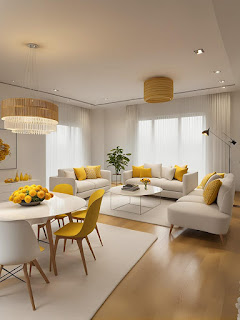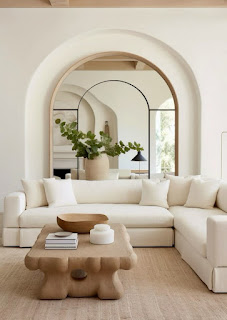Juicy Part Of Interior Design
Let There Be Light: The Role of Lighting in Interior Design
Lighting is often the unsung hero of interior design. While colors, textures, and furniture tend to steal the spotlight (no pun intended), it’s light—both natural and artificial—that truly brings a space to life. It’s not just about brightness or visibility; it’s about atmosphere, emotion, and functionality. In the right hands, lighting becomes a powerful design tool that can transform any room into something remarkable.
The Foundation: Natural Light
Natural light is every designer’s best friend. It changes throughout the day, shifting the mood and feel of a room without you lifting a finger. South-facing windows flood interiors with consistent light, perfect for common areas like living rooms and kitchens. North-facing rooms offer softer, cooler light—ideal for studios or peaceful bedrooms.
Maximizing natural light means using reflective surfaces, light-colored walls, sheer curtains, and strategic mirror placement. The goal is to let the light bounce and fill the space, making it feel larger, fresher, and more inviting.
Layered Lighting: The Design Rule You Shouldn't Break
Interior designers often talk about the importance of “layering” light. This means combining three types of lighting: ambient, task, and accent.
1. Ambient Lighting is the general illumination of a room. Think ceiling fixtures, chandeliers, and recessed lights. It sets the tone and ensures you’re not bumping into furniture.
2. Task Lighting is functional lighting for specific activities—reading lamps, under-cabinet lights in the kitchen, vanity lights in bathrooms. It prevents eye strain and improves precision for focused tasks.
3. Accent Lighting highlights a room’s features: artwork, architectural details, or statement pieces. Spotlights, LED strips, and wall sconces add drama and depth to a design.
A well-lit room typically has all three types working in harmony.
Mood & Color: How Light Affects Perception
Light doesn’t just illuminate—it influences how we perceive color, size, and even temperature.
Warm vs. Cool Light: Warm white lighting (2700K–3000K) creates a cozy, intimate vibe, great for living rooms and bedrooms. Cool white lighting (4000K–5000K) feels more energizing and is often used in offices and kitchens.
Color Rendering Index (CRI): This measures how accurately a light source reveals the true color of objects. A high CRI (90+) is ideal in places where color matters—like makeup areas or art studios.
Lighting can even change how big a room feels. Uplighting makes ceilings look taller, while wall washers widen a space visually.
Statement Lighting: Function Meets Art
In modern interior design, lighting isn’t just a background player—it’s often the centerpiece. Sculptural pendants, oversized floor lamps, vintage chandeliers, or minimalist LED strips can define a room’s character. A single dramatic fixture can tie a design together or become a conversation starter.
Smart Lighting: Technology Meets Aesthetics
Today’s lighting is more adaptable than ever. With smart bulbs and dimmer systems, you can change color temperature, adjust brightness, and even set schedules—all from your phone. This flexibility gives you control over the ambiance at any moment, whether it’s a quiet dinner or a productive morning work session.
Final Thoughts: Lighting as Experience
In interior design, lighting isn’t just a tool—it’s an experience. It shapes how we interact with spaces, how we feel within them, and how we see the world around us. When used intentionally, light becomes more than illumination—it becomes emotion, narrative, and style.
So next time you walk into a beautifully designed room, take a moment to look up—or around. There’s a good chance it’s the light that’s making everything shine.
💌 Want to book a session or ask a question?
📧 Email:rkadmala@gmail.com
📞 Call/WhatsApp: 0796109572




classy
ReplyDeleteWow looking good
ReplyDelete